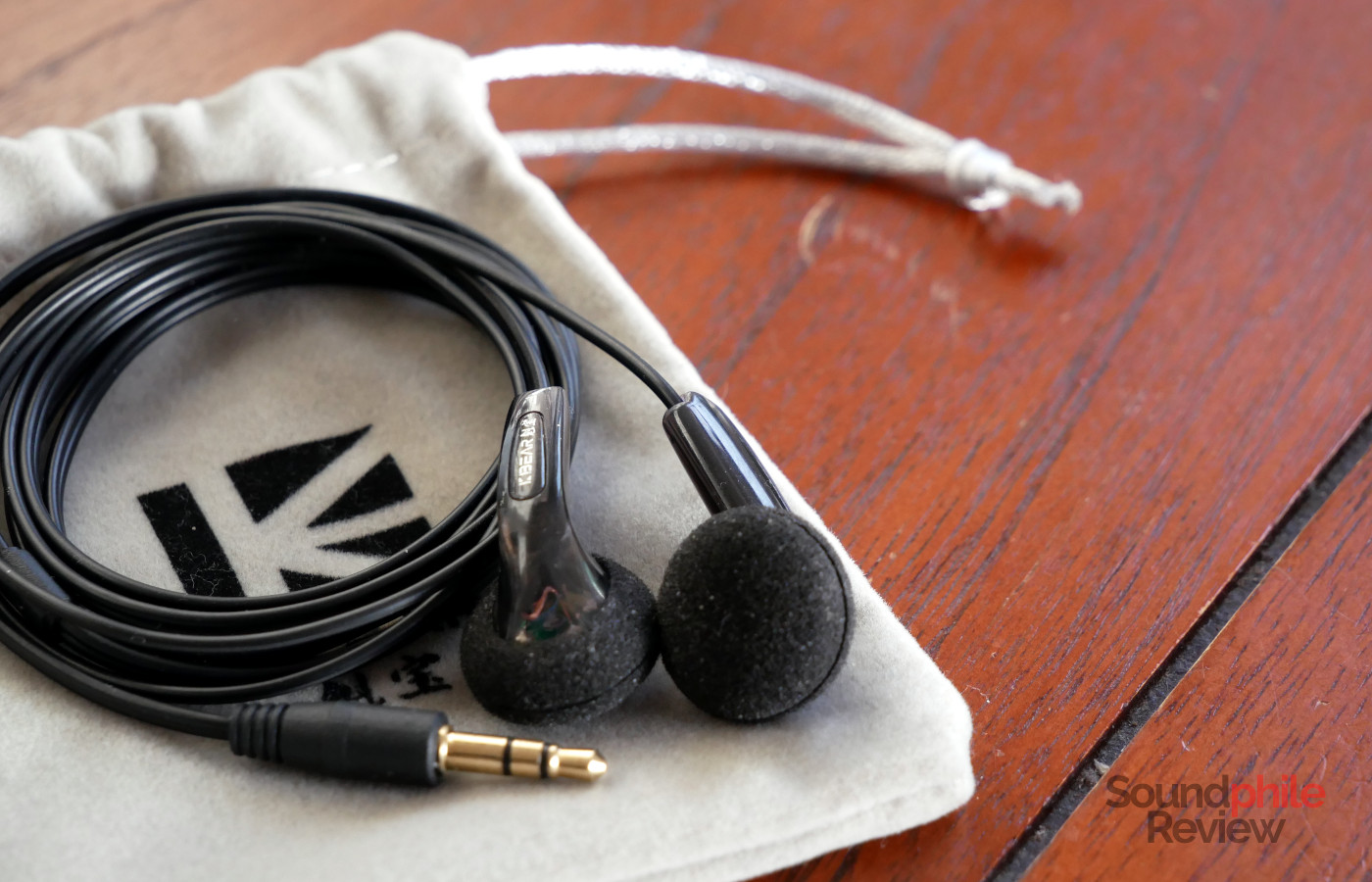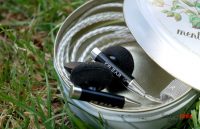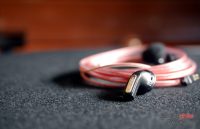Truth and virtue may lie in the middle, but the extremes surely do have interesting bits as well – especially if you look at the extremes in pricing. When Wendy at KB EAR contacted me asking me if I wanted to try the KB EAR Stellar, a $4 earbud model, I immediately accepted. I mean, I already tried the $5 VE Monk Plus and they turned out to be great, so I was very curious: how good can $4 earphones sound? Let’s find out!
Disclaimer: I received the Stellar free of charge from KB EAR. They sell for ~$4.5 on KB EAR’s official AliExpress store.
TL;DR: recap
| Pros |
Cons |
| Really comfortable
Well-built Bright-neutral signature Good technical ability |
Fatiguing peaks around 4 and 8 kHz
Tangly cable Relatively slow transients |
Rating: 7.8/10
Packaging & Accessories
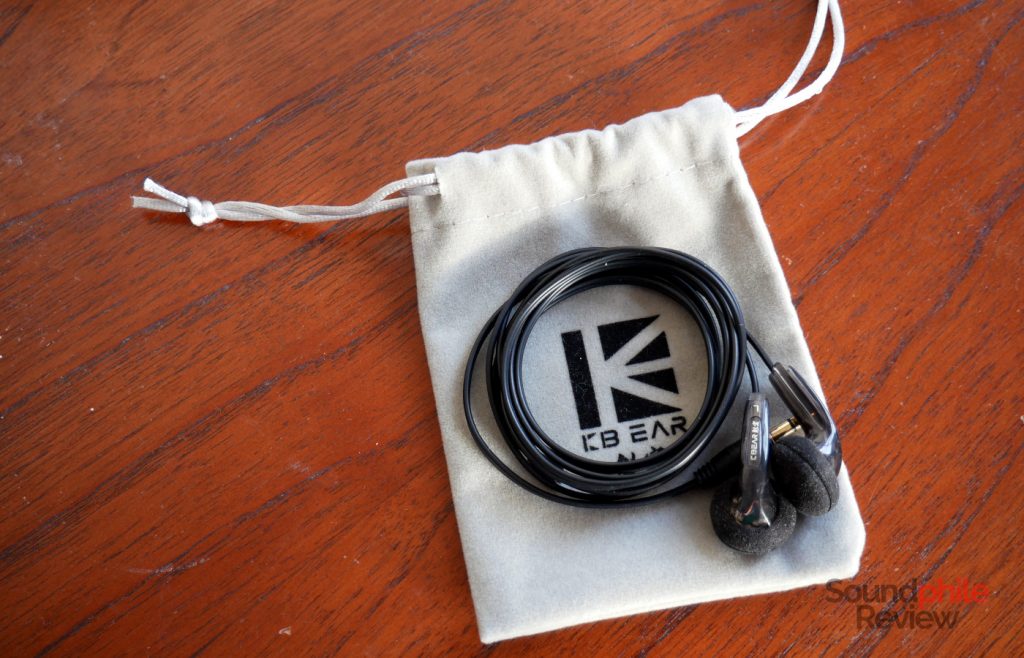
The KB EAR Stellar comes in an unassuming cardboard box, but let this not fool you: despite being so cheap, the earphones come with two foam covers and a carrying bag. Seriously, they managed to include a bag when earphones costing 30 times as much don’t have it! Seriously, guys, it costs very little money but it’s guaranteed to make buyers happy. Take notes.
Design & Comfort
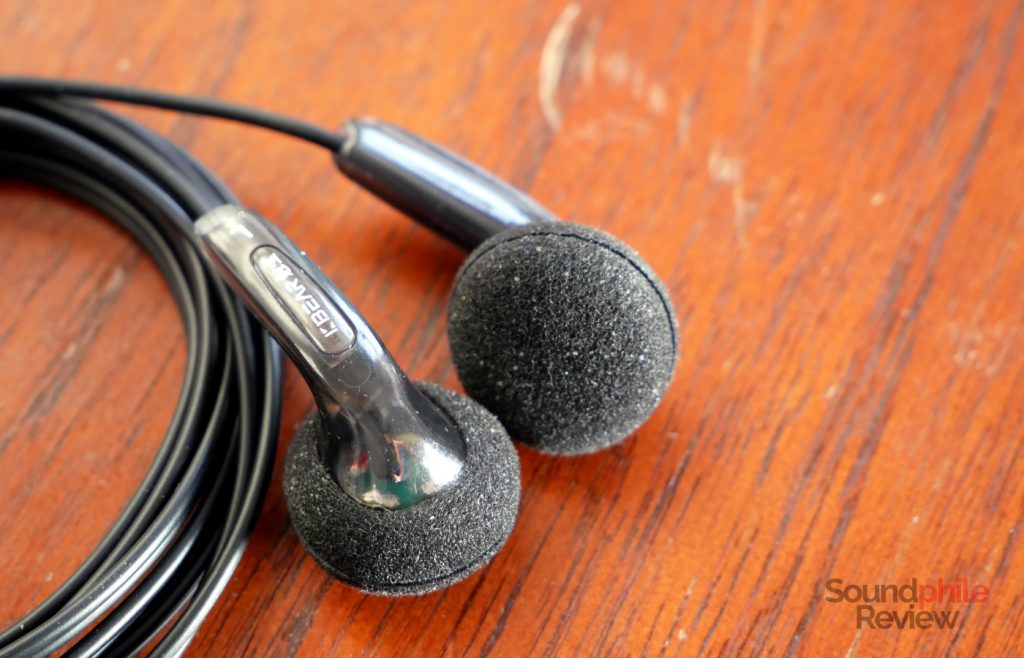
The KB EAR Stellar use the classic MX500 shell, so they’re basically the same as all the other earbuds that use it – including the good old Monk Plus. On the good side of using a standard shell is that if you’ve ever tried any earbuds using it, then you know what to expect in terms of comfort. In terms of build there’s not much to say, as the shell is well-known for being durable and quite resistant to use and abuse and this version is no exception, with good-quality materials used for its construction. KB EAR offers the Stellar in four different colours: black, red, white, blue and transparent black.
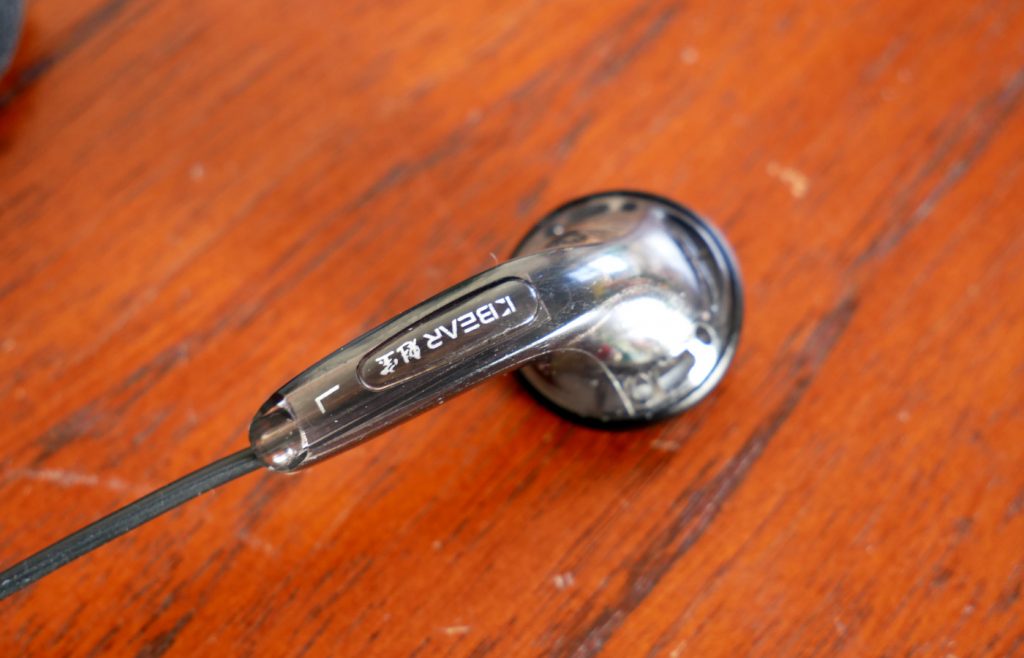
Comfort is quite good, as the earphones are extremely lightweight and so is the cable. You could have issues if you have very small ears, but otherwise they should prove extremely comfortable. They improve noticeably when you use the included foams and that also provides a teeny-tiny bit of isolation as well – not so much in the sense that you don’t hear sounds from outside, but in the sense that bass is deeper as the ear canal has a bit of seal.
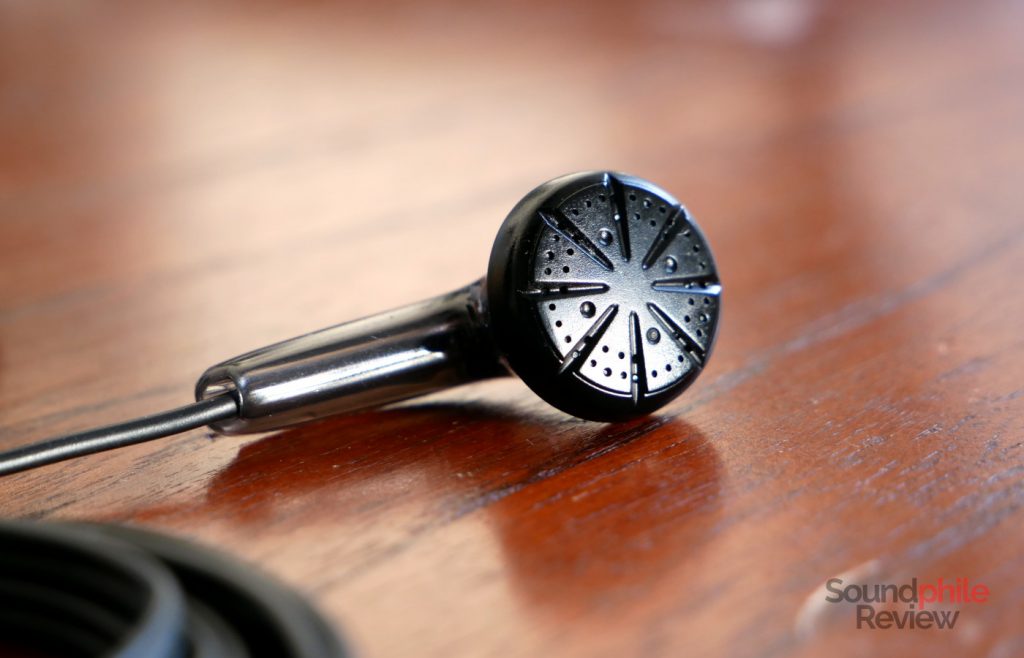
Isolation is, as you can expect from earbuds, non-existent. Like, there is no difference between wearing them and not. That also means that other people will hear you if you turn the volume up enough.

The cable is quite similar to that of the VE Monk, but it is even softer. It’s a very basic cable and it looks and feels cheap, but it is very lightweight and resistant enough to survive a bit of abuse. Not a lot though, just a tiny bit.
Sound & Specs
I listened to the KB EAR Stellar using mostly the iFi Neo iDSD desktop DAC, with my notebook PC as the source. It was loaded with FLAC files, mostly 16 bit / 44.1 kHz.
KB EAR Stellar |
| Frequency response | 20 – 20,000 Hz |
| Impedance | 30 Ω |
| Sensitivity | 115 dB |
KB EAR used a large driver for the Stellar: it has a diameter of 15.4 mm, which is quite big for IEMs but just a bit larger than average when it comes to earbuds. It has theoretically low power requirements, with impedance being just 30 Ω and sensitivity being 105 dB; despite this, you will need to put in some juice to make the Stellar sing. Mind you, they don’t require astronomical amounts of power, but while I keep my Shanling M2X on volume levels around 10-15 for the vast majority of IEMs, the Stellar requires me to go beyond 25 to get some decent volume – they are the open back equivalent of the earphone world, after all.
The KB Ear Stellar are characterised by a very weird sound signature that privileges mid-bass and the middle area of midrange. This results in a weird tuning that can work with some genres, but which may also prove fatiguing.
Soundstage is large, as you would expect from open-back earphones, but it’s not expansive and it’s comparable to very wide closed-backs. There’s not much depth either, and it actually seems to me like the sound is produced in a corridor that passes through my ears – a weird image, maybe, but I can’t find a better description. Imaging is therefore limited in its ability to place instruments in space, but it does give you a general idea of where they are and that’s actually more than I’d have expected out of earphones that cost less than half a pint in a pub. Instrument separation isn’t great, but it is enough to tell the main instruments apart – and something more: in Philip Glass’ Pruit Igoe you can hear all the main parts with enough clarity, which is quite something.
Bass is quite surprising in that it offers some real depth and extends down to around 40 Hz. That’s quite surprising, because that’s hard to achieve even for many in-ear headphones that don’t have to overcome the difficulty of reproducing sound in the open. It’s quite an impressive achievement, even more so because of the price (that’s a recurring theme, but I just can’t avoid mentioning it as it matters quite a lot in this context). Mid-bass is still the prevailing bit, and by a long shot: it’s prevailing so much that it actually overshadows the lower mids, leaking over them and creating a rather dark lower section. Still, it’s detailed enough to be enjoyable and it’s more than decently fast, so transients are well-defined enough to actually carry some impact and be credible. It might not suit everyone’s tastes, but it certainly is better than I’d bargained for.
Listening to Vessels from the Koyaanisqatsi soundtrack by Philip Glass you can clearly hear how the middle and upper parts of midrange are emphasised: the voices in the choir sound very forward, but it’s the female voices that are the most present. Male voices are, on the other hand, less present and not entirely natural, as they appear lacking in body; female voices, on the other hand, end up being a bit overly present and even a bit harsh. This makes the sound as a whole fatiguing to me even when listening at moderate levels. In the same track there is a synth playing high-pitched notes that are overly present and become fatiguing; instead of being right behind the vocals it is presented in front of them, almost to the point it becomes the central part of the scene. On the positive side, though, detail is astounding for this price range and it battles earphones costing more than $30 – ten times the price!
Treble is the Stellar’s Achille’s heel as it has two main issues: the first is that it is concentrated in the lower area, and the second is that it basically does that because there’s nothing else. It is not really detailed, either, so it only gives you the gist of what’s happening. It’s a bit like looking at a low-res picture: you get what’s going on, but you don’t really see it as if it was real. The emphasis on the lower area might also contribute to the sensation of fatigue I mentioned, as there seems to be a small spike there that might sound a bit aggressive at times. It’s mostly fine, as long as you don’t pump the volume too much, but it’s definitely the least refined area of the Stellar’s sound.
The analysis above was conducted listening to the earphones with the foams on. Removing them the sound becomes less bass-centric and opens up a bit, with more presence of mids and treble. The difference is modest, but audible: the Stellar are noticeably more balanced without the foams, though they lose bass depth and comfort while also keeping the same issues (e.g. treble and upper midrange).
KB EAR Stellar Comparisons
Comparing the KB EAR Stellar to other earbuds is difficult – not so much because it’s hard to make comparisons, but because there are not that many earbuds in their price range that sound decently. On top of that, there are even less which I own. So here my two picks:
- KB EAR Stellar vs Venture Electronics Monk Plus: the Monk Plus offer a distinctly different signature from the Stellar. Bass is much less present, especially in the sub-bass area, but it is slightly better in speed and decay. Midrange is way more emphasised overall, appearing as the main ingredient of the signature; it has overall less presence in the lower area, but it is less emphasised in the upper one: as a result it appears more balanced. Treble is much richer on the Monk Plus, and it is way less fatiguing. Detail is better on the Monk Plus. Soundstage is wider on the Stellar, but deeper on the Monk Plus, which also has better imaging and instrument separation. The differences in technical ability are not massive, so the main reason why you should choose one instead of the other is the sound signature.
- KB EAR Stellar vs Shozy SG: I thre this in just because I had it available… and because I thought it would be interesting how a difference of almost 50 times the price changed sound quality. The differences are indeed noticeable. Bass is comparably deep, but the SG offers much better control, better physicality, better speed and better detail. Midrange is again similar, but it doesn’t have the same emphasis on the upper area on the SG so it’s a bit less fatiguing; it is also more detailed. Treble is a bit more extended and definitely much richer, with a lot more details being presented to the listener. The soundstage is definitely wider on the Shozy, which offered much more accurate imaging and much better instrument separation. At the end of the day, the SG are not 50 times better than the Stellar, but they are significantly better in all regards (which I expected to be the case, but it’s good to have confirmation of that).
Final Thoughts
Once in a while, a manufacturer comes up with a product that’s cheap and offers good sound. The KB EAR Stellar are one such product and they try to challenge the current champion of affordability, the Venture Electronics Monk Plus. At less than $5, the KB EAR Stellar are difficult to fault. They offer astronomical value: they actually sound pretty much decently and I would maintain the same opinion if they costed $20. The fact that they cost less than one fifth of that only makes them even more remarkable. Their flaws – which are there, mind you – are overall minor.
I’m not madly in love with them as my personal preference on tuning is different than what’s on offer, but the Stellar really are something. Their name is quite apt as they offer most of the features you should look for, while being as cheap as half a pint at your local pub. They’re also absolutely great as a gift – they’re inexpensive, but they offer a very good peek at how better earphones sound like. So if you want to introduce someone to better audio quality, be it yourself or someone else, these are a very solid option that you should definitely consider.

